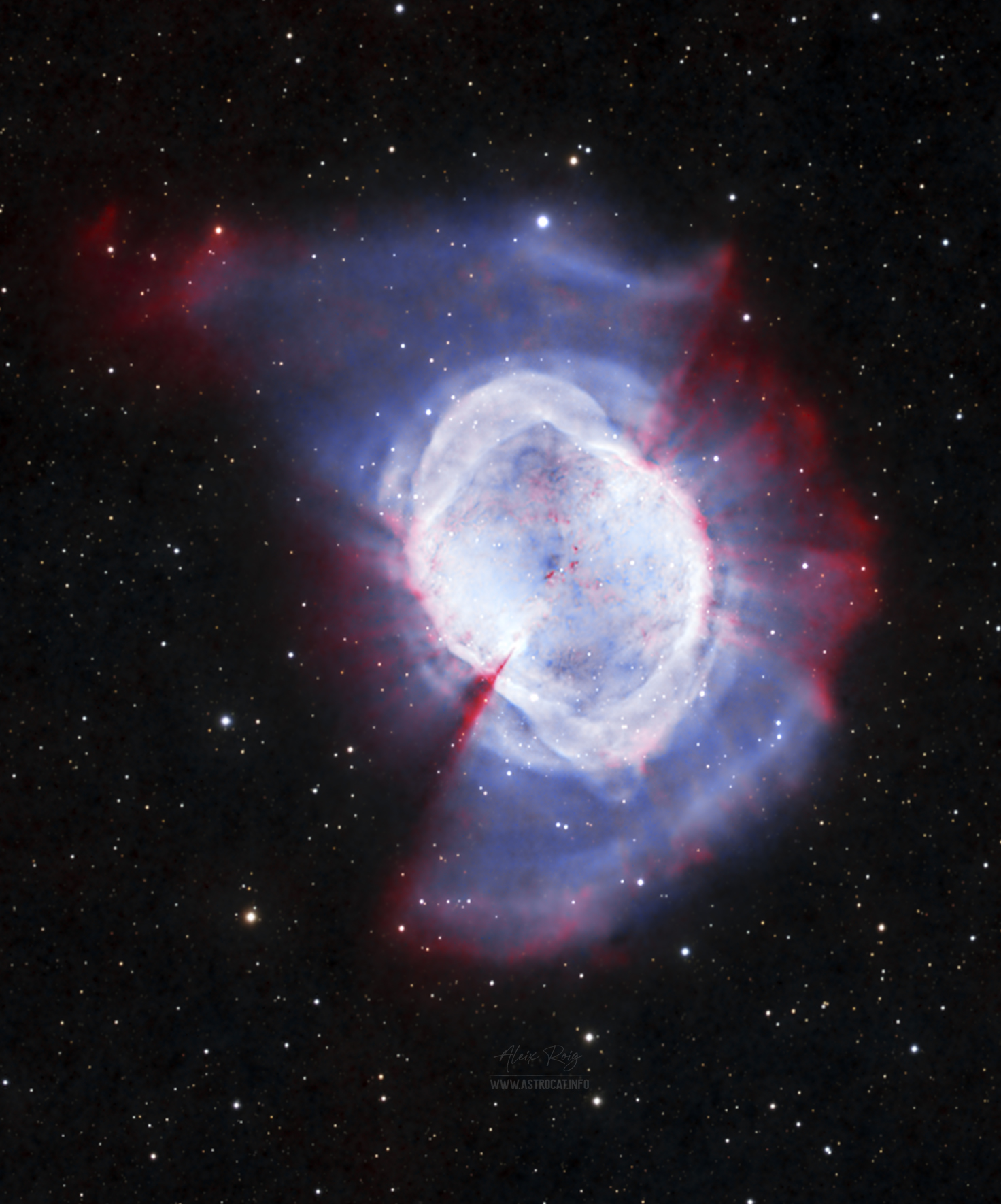Messier 27, also known as the Dumbbell Nebula, is a famous planetary nebula located in the constellation Vulpecula. It lies some 1,360 light-years away from Earth. It is one of the most well-known and studied planetary nebulae in the night sky. It was discovered by Charles Messier back in 1764.
The colors shown in this image come from the emissions hydrogen (see in red) and oxygen (see in blue) emissions. All the data needed for this image has been captured from my backyard observatory located in Prades (Tarragona) with the use of narrow band filters and also R, G, B filters to capture the colors of the stars. The color mapping of the nebula is a HOO, where Hydrogen Alpha is assigned to the R channel, while the [OIII] is assigned to G and B.
The full image covers an area of 27′ x 29′
Thanks for taking your time on this site.
Image Details
FSQ106:
Ha: 188 x 300″ (15h 40′)
RGB: (57, 45, 35) x 30″ (2h 17′)
FSQ85:
[OIII]: 100 x 300″ (8h 20′)
Calibrated with darks, flats and dark-flats.
Total exposure: 26h 17′
Moon at 60% (on average)
Image resolution: 1.46”/pixel
FOV (full image): 27′ x 29′
Equipment
FSQ106 EDX4 + ASI2600MM + LRGB Astrodon filters + Ha3nm Antlia – with ZWO EFW 7 pos
FSQ85 + ASI294MM + SHO LRGB Baader filters – with ZWO EFW 8 pos
Mesu200 mount
Guiding with ASI120MM and ZWO Mini Guide Scope
Software
SGP, PHD2, APP, PIX, LR, PS.
Aleix Roig, October 2023
Prades (Tarragona, Catalonia – Spain).
Full HD image on Astrobin.


